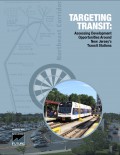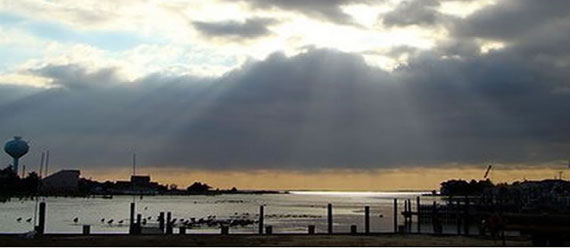New Jersey Future Blog
Comprehensive Transit Inventory Allows for More Strategic Investment Decisions
September 24th, 2012 by Tim Evans
 There are 243 distinct transit stations scattered throughout New Jersey, with 152 of the state’s 566 municipalities hosting at least one station. Ten are multi-modal terminals, 205 are served only by rail (including commuter rail, light rail, and the PATH and PATCO rapid-transit systems), 12 are ferry terminals, and 16 are major bus terminals not served by another mode.
There are 243 distinct transit stations scattered throughout New Jersey, with 152 of the state’s 566 municipalities hosting at least one station. Ten are multi-modal terminals, 205 are served only by rail (including commuter rail, light rail, and the PATH and PATCO rapid-transit systems), 12 are ferry terminals, and 16 are major bus terminals not served by another mode.- Twenty-eight rail stations are located in neighborhoods where more than 80 percent of households own at most one vehicle.
- Ten stations have more than 100 parking spaces for every 1,000 people who live in the surrounding area: Hamilton, Princeton Junction, Secaucus, Middletown, Metropark, Lindenwold, Aberdeen-Matawan, Trenton, Metuchen, and Westfield. This is an indication that they are drawing their riders from a wide catchment area, not just their immediate neighborhoods.
These are just a small fraction of the data New Jersey Future has compiled in its new comprehensive database of all of the state’s 243 transit stations and their surrounding neighborhoods. Searchable by data element, by station or municipality, or by ranking, the transit station inventory provides policy makers, municipal officials and development professionals with a systematic way to identify the highest-potential opportunities for various kinds of development around transit stations.
Not All Stations Are Equal; What Should Go Where?
New Jersey has one of the most extensive public transportation systems in the country, giving it a rate of transit commuting that is second highest among the 50 states. Roughly one-third of all New Jersey residents live within walking-distance of a train station, making the state’s transit network a valuable resource: It helps reduce congestion on the state’s roads; alleviates the emission of pollutants and greenhouse gases; and increases mobility, including access to jobs, while reducing the need for household vehicle ownership.
Given this wealth of benefits, increasing transit ridership is a desirable goal. For New Jersey to do that, an important intermediate goal must be to improve access to transit, by promoting transit-oriented development, or TOD. The more that activity centers (homes, stores, workplaces) can be clustered near the transit system, the more people will be able to use transit for at least some of their daily activities.
But not all TOD is necessarily equal; some transit stations are better suited than others for TOD, and of those, some may be particularly well suited to one type of development (office, retail, residential, parking) but not to others. The unique characteristics of each individual station area can inform decisions about what kind of development should be encouraged at what locations. New Jersey Future’s transit station inventory now brings information about all of those characteristics into one place.
The dataset enables a unique, 360-degree profile of each station, including transit lines and frequency of service, station-area parking availability, and travel times to New York Penn Station. Available demographic characteristics for the surrounding neighborhoods include population and housing density, median income and home value, and details of vehicle ownership. At the municipal level, employment data is available.
The transit station inventory can help to answer many questions regarding infrastructure and economic development opportunities around transit stations. Policy makers can assess and rank transit stations and their host neighborhoods quantitatively, allowing for a more systematic, targeted statewide TOD promotion strategy; and local users can identify characteristics of station areas that provide advantages for one type of development over another.
The report that accompanies the database, Targeting Transit: Assessing Development Opportunities Around New Jersey’s Transit Stations, is available as a free download, along with a data dictionary describing the items contained in the database. New Jersey Future is also making available customized reports from the database. Organizational members are entitled to a standardized report at no charge. For more information about customized reports please contact Director of Communications Elaine Clisham (eclisham njfuture
njfuture org?subject=Transit%20Station%20Reports) .
org?subject=Transit%20Station%20Reports) .
















